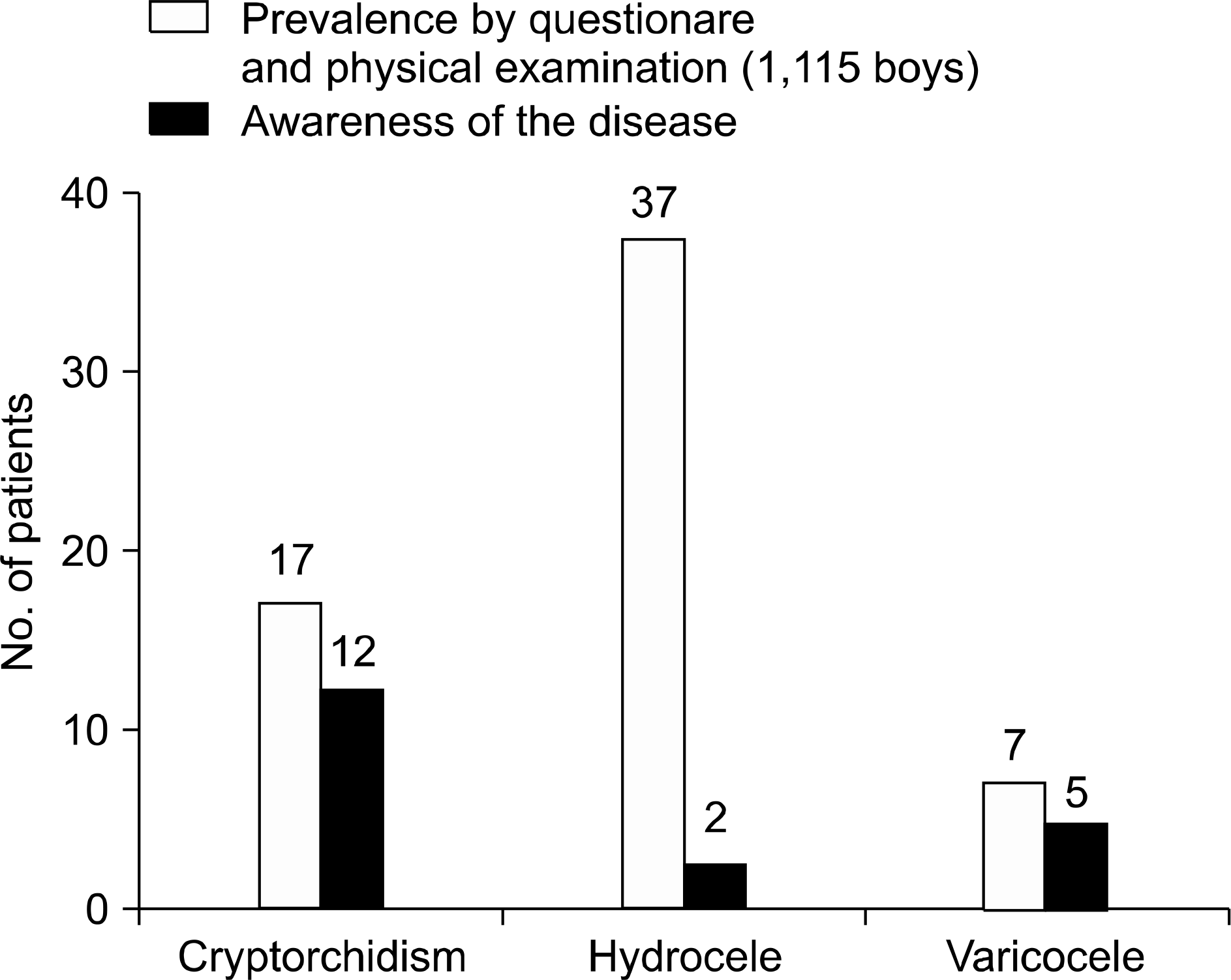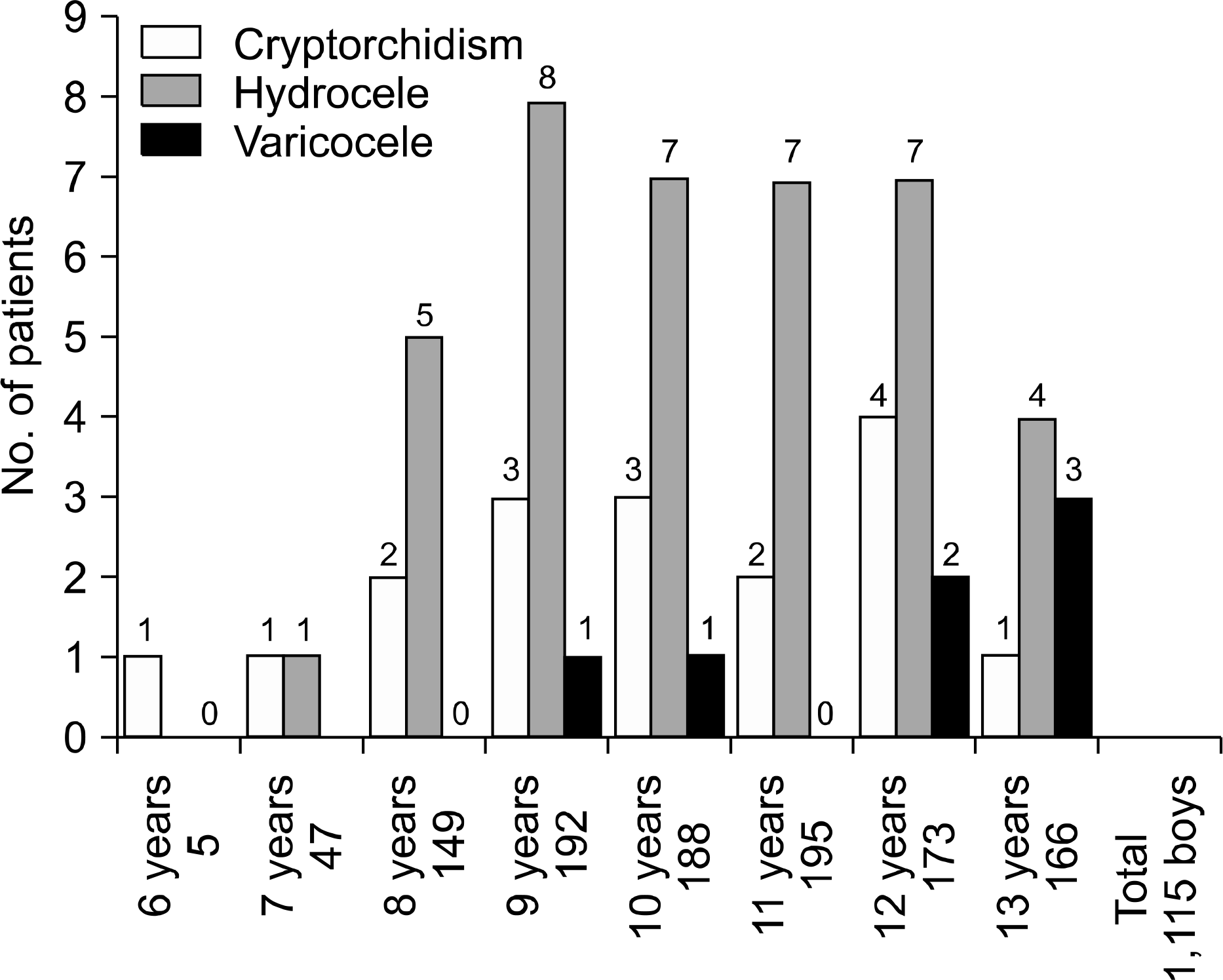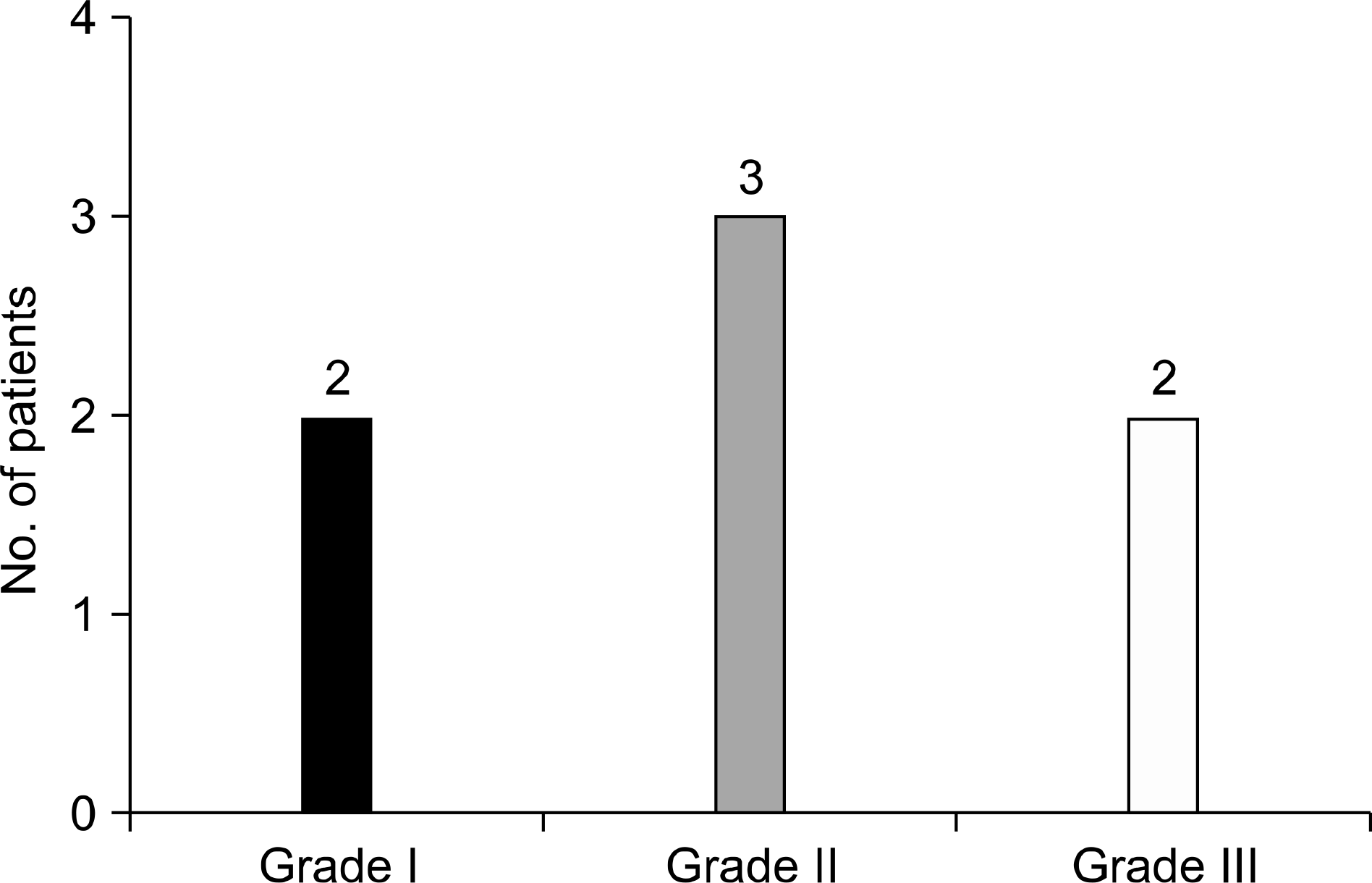Abstract
Purpose
We investigated the prevalence and parent’s concern of cryptorchidism, hydrocele and varicocele among elementary school boys.
Materials and Methods
A total of 1,795 elementary school boys who resided in Gwangju were investigated by questionnaires. Among them, 1,115 boys who agreed to a physical checkup underwent physical examination between May and June 2007.
Results
The most frequent anomaly was hydrocele, which was seen in 37 boys (3.31%) on questionnaires and physical examination. The other anomalies were cryptorchidism in 17 boys (1.52%) and varicocele in 7 boys (0.62%). Most of the boys and their parents were not aware of their cryptorchidism (70.58%) and varicocele (71.42%). The boys who replied in questionnaires that they had been diagnosed with hydrocele appeared to had undergone hydrocele repair in the past.
REFERENCES
1.Barthold JS., Gonzalez R. The epidemiology of congenital cryptorchidism, testicular ascent and orchiopexy. J Urol. 2003. 170:2396–401.

2.Yücesan S., Dindar H., Olcay I., Okur H., Kilicaslan S., Ergören Y, et al. Prevalence of congenital abnormalities in Turkish school children. Eur J Epidemiol. 1993. 9:373–80.

3.Virtanen HE., Toppari J. Epidemiology and pathogenesis of cryptorchidism. Hum Reprod Update. 2008. 14:49–58.

4.Kumanov P., Robeva RN., Tomova A. Adolescent varicocele: Who is at risk? Pediatrics. 2008. 121:e53–7.

5.Gwak DH., Kim BH., Park SW. Prevalence of varicoceles in children and adolescents in Namhae-gun. Korean J Urol. 2001. 42:967–70.
6.Park JW., Kim KS. Incidence, risk factors and spontaneous descent of cryptorchidism. Korean J Urol. 2003. 44:1203–7.
7.Depue RH. Maternal and gestational factors affecting the risk of cryptorchidism and inguinal hernia. Int J Epidemiol. 1984. 13:311–8.

8.Fernandez MF., Olmos B., Granada A., Lopez-Espinosa MJ., Molina-Molina JM., Fernandez JM, et al. Human exposure to endocrine-disrupting chemicals and prenatal risk factors for cryptorchidism and hypospadias: a nested case-control study. Environ Health Perspect. 2007. 115(Suppl 1):8–14.

9.Inan M., Aydiner CY., Tokuc B., Aksu B., Ayhan S., Ayvaz S, et al. Prevalence of cryptorchidism, retractile testis and orchiopexy in school children. Urol Int. 2008. 80:166–71.

10.Lee JH., Han JJ., Song SY., Park KH. Histological changes of the cryptorchid testis according to the age. Korean J Urol. 2002. 43:631–7.
11.Murphy F., Paran TS., Puri P. Orchiopexy and its impact on fertility. Pediatr Surg Int. 2007. 23:625–32.
12.Lim HS., Kim HT., Moon KH. Five year follow-up testicular growth results after orchiopexy in palpable cryptorchid testis. Korean J Urol. 2008. 49:271–6.

13.Gorelick JI., Goldstein M. Loss of fertility in men with varicocele. Fertil Steril. 1993. 59:613–6.
14.Kass EJ., Belman AB. Reversal of testicular growth failure by varicocele ligation. J Urol. 1987. 137:475–6.

15.Steeno O., Knops J., Declerck L., Adimoelja A., van de Voorde H. Prevention of fertility disorders by detection and treatment of varicocele at school and college age. Andrologia. 1976. 8:47–53.

16.Hudson RW., Perez-Marrero RA., Crawford VA., McKay DE. Hormonal parameters of men with varicoceles before and after varicocelectomy. Fertil Steril. 1985. 43:905–10.
17.Harrison RM., Lewis RW., Roberts JA. Pathology of varicocele in nonhuman primates: long-term seminal and testicular changes. Fertil Steril. 1986. 46:500–10.
18.World Health Organization. The influence of varicocele on parameters of fertility in a large group of men presenting to infertility clinics. Fertil Steril. 1992. 57:1289–93.
20.Shin JW., Kim SW., Paick JS. Effects of vericocele treatments in adolescents: changes of semen parameters after early varicocelectomy. Korean J Urol. 2005. 46:481–6.
21.Kim DH., Ku JH., Lee NK. Epidemiologic study about inguinal hernia and hydrocele performed in young men in Daejeon City and Chung-nam area. Korean J Urol. 2002. 43:781–5.




 PDF
PDF ePub
ePub Citation
Citation Print
Print





 XML Download
XML Download